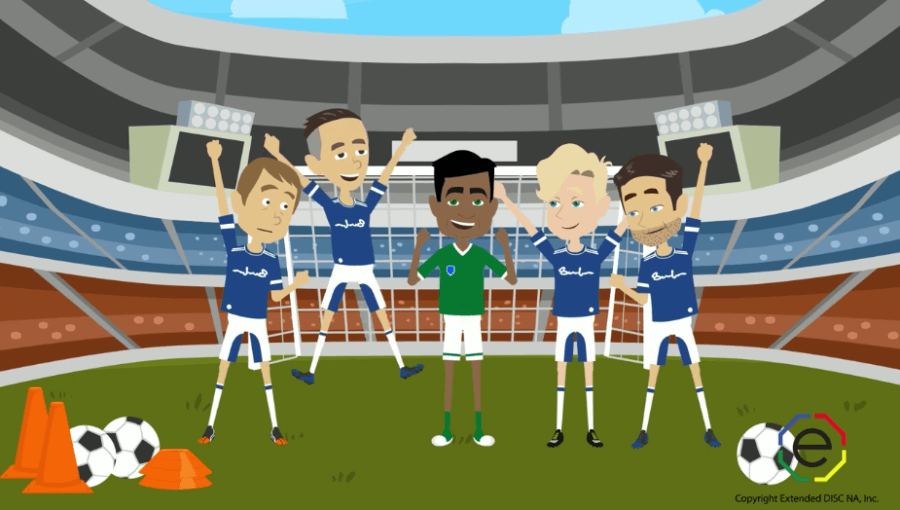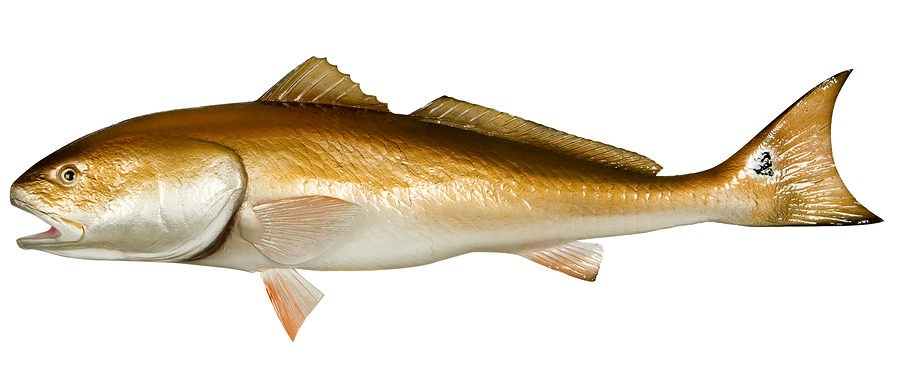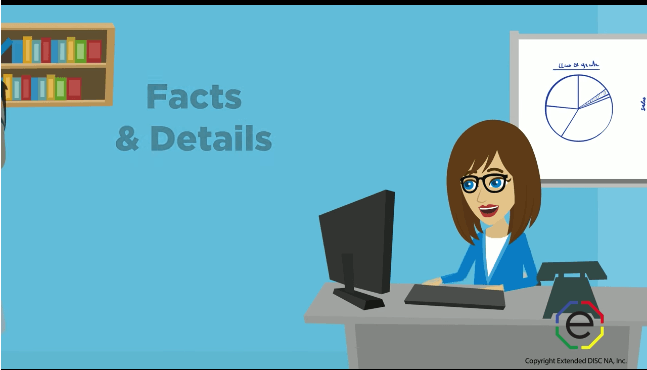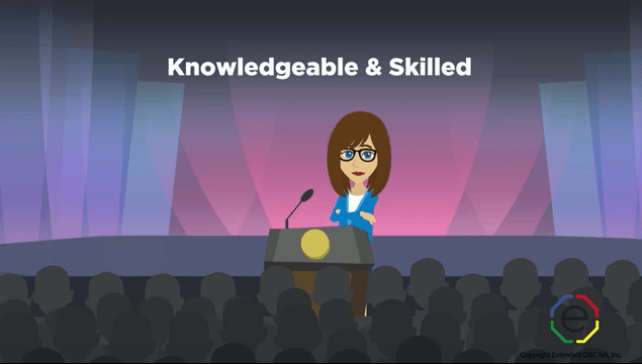The Steady Personality Type, also known as the S-style, is amiable and friendly. He likes to focus on building relationships and being a team player. Learn some tips for being more successful as an S-style.
Meet Alex: our Steady Personality Type
 Alex is a great example of a Steady Personality Type. He has worked as a bank branch manager for 12 years. Alex was just promoted because the previous manager suddenly left for a job at a competitor bank. Alex was the Relationship Manager and also Darren’s “unofficial” assistant manager. Darren delegated many of his routine responsibilities to Alex so he could focus on more interesting tasks. Darren thrived on business development.
Alex is a great example of a Steady Personality Type. He has worked as a bank branch manager for 12 years. Alex was just promoted because the previous manager suddenly left for a job at a competitor bank. Alex was the Relationship Manager and also Darren’s “unofficial” assistant manager. Darren delegated many of his routine responsibilities to Alex so he could focus on more interesting tasks. Darren thrived on business development.
Alex and Darren worked well with the division of duties. Their bank consistently ranked as one of the top in the region even though it was located in an poorer neighborhood. More customers came in on a daily basis than any other branch location. Their branch was thriving.
Balancing his manager’s D-style
The branch employees accepted Alex’s unofficial assistant manager role. Alex was calm, patient and supportive whereas Darren was easily frustrated and impatient. Darren intimidated employees. New employees were warned that silly mistakes or too many questions could set him off. Alex was the manager employees went to for questions and support. Darren was the actual boss, but Alex effectively ran the daily operations. Darren trusted Alex and called him his “right arm”.
Darren’s boss, Jack, knew of the arrangement so Alex quickly emerged as the best candidate when Darren left. Quite honestly, there was no other realistic option to fill the vacancy. The management ranks were already thinned since the bank had gone through fast growth and acquisitions. A few employees applied, but they didn’t have experience to fill the job. Alex was a safe decision.
A Steady Personality Type fears change
Alex found his first day as the branch manager exciting, but daunting. His future goal was always to become a bank manager, but now the dream was real. There was no time to plan or prepare since Darren left so suddenly. He had to start now.
The frightening feelings faded quickly since everyone seemed happy to see Alex in his new role. The branch employees were clearly happy as their mood was one of relief. Many of the customers appeared to be pleased as well. Alex was familiar to them and he was always eager to help. The first day was long, but not so bad. Even though he didn’t leave work until his last teller left, he went ahead and ordered new official business cards. The Steady Personality Type survived the transition and became a Branch Manager.
Alex settles in
Soon Alex realized his job was essentially the same. He had the same jobs and his employees and customers treated him the same way. However, even though Alex realized he was doing a lot of the same things, he felt different. At nights he did not always sleep well. He laid awake thinking about what he needed to do. He felt a little overwhelmed before the day even started. Alex was the first one to arrive and often last to head home. The extra office time made him feel more prepared. He got everything done without overly rushing or pressured by the many deadlines. After a few months Alex finally began to feel calmer inside as there was no evidence he was not doing well. In fact, Jack kept calling him weekly assuring he was doing well. Slowly, Alex believed him.
Almost twelve years have passed. Jack has left for a new job. Both Jack and Darren are in top management positions. Alex is comfortable in his role and likes his job. He especially likes working with his employees and has gotten to know them very well. Yes, many of them have moved on to bigger and better things, but Alex feels there is reassuring stability to his team.
Alex is content and settled. He feels he is able to be in charge of his daily work without feeling overly pressured by others. He is also getting the support he needs from his boss, other departments and his employees. A few trusted employees have become his “right arms”. Alex’s fairness as a boss has made many of his employees very loyal to him.
Challenges for Alex
There are only a few parts of his job that Alex does not really care for. The business development aspect of his job is just not for him. Making phone calls and visits to prospects to get their business takes a lot of energy from Alex. Usually, he ends up calling on his existing customers to see how things are going and hoping they need to borrow money to expand their businesses. Alex tries to set aside time for business development activities, but frequently gets “distracted” by other administrative tasks.
Deep down Alex knows it’s his way of procrastinating. Picking up the phone or knocking on doors to generate business is just not natural for him. “I am just not good in sales”, he tells friends. Thankfully, existing customers and walk-ins have provided enough business to keep Alex out of trouble. However, the branch is no longer a top performer. Alex blames the declining neighborhood as the main culprit.
Changes and tough talk are stressors
Alex prefers staying at the bank versus attending the monthly regional meetings. While he likes seeing colleagues, the meetings make him a little anxious. He wants to hear how others deal with issues because he needs the help, but management puts more and more demands on him. They want more products sold and better control over costs. Also, they are always coming up with new plans and “better ways of doing things”. Alex wants to do well, but views the changes as unnecessary. Besides, many of the new ideas don’t last very long anyways and Alex has learned to take his time before actually applying them. He believes that taking care of the daily customers is all he needs to focus on.
Alex thinks he’s very fortunate. He has a wonderful family and a job he likes. While his job and responsibilities create stress at times, he feels in control and steady. He also can enjoy personal time with his wife and children. Alex always looks forward to the slower paced weekends and family time. However, pressure from his bosses to try new ways to bank is starting to cut into his steady and managed routine.
Intro to the Steady Personality Type
 The Steady Personality Type is just that, steady. He’s also reserved, calm, and modest. While he likes people, the S-style is different from the social and outgoing I-style. He prefers interactions with familiar people. The Steady Personality Type prefers things to remain the same because changes and surprises threaten his sense of stability and security. As a result, he prefers environments that are safe and familiar. Often the S-style has a certain routine at work and home that he likes to follow. This provides a comfortable feeling of familiarity and security for the S-style.
The Steady Personality Type is just that, steady. He’s also reserved, calm, and modest. While he likes people, the S-style is different from the social and outgoing I-style. He prefers interactions with familiar people. The Steady Personality Type prefers things to remain the same because changes and surprises threaten his sense of stability and security. As a result, he prefers environments that are safe and familiar. Often the S-style has a certain routine at work and home that he likes to follow. This provides a comfortable feeling of familiarity and security for the S-style.
While all of us like to do things a certain way, the S-style tends to get the most upset when plans and routines are disrupted. We may not notice this however, since he will hide behind his calm and composed demeanor well, while on the inside he can feel distressed and anxious that things did not turn out how they had planned.
The S-style wants to be accepted by others. He is very conscious about not disappointing others. If he makes a commitment to do something, he will do everything in his power to follow through. S-styles are eager to help others. He does not expect others to reciprocate, but would like sincere appreciation. If the S-style feels the appreciation is not sincere, it is worse than not getting a “thank you” at all. Remember to mean what you say when interacting with an S-style. Fairness, sincerity, and justice are very important to the Steady Personality Type.
Relationships are key
Family and friends are very important to Steady Personality Type. Obviously, the other three DISC styles also care about friends and family. However, the Steady Personality Style finds stable and secure relationships especially important. He finds personal time with family and friends to be almost sacred. When work interferes with this time, he may become inwardly stressed or upset. He may be fuming inside while outwardly appear fairly calm.
The steady profile type also finds stability in his coworkers. He enjoys being a part of team or a group because the other members can provide help and support. The S-style is eager to be there for his team members and will go to great lengths to help them. He’s very loyal and often defends his group or team with strong emotions. Confrontations are very daunting for the S-style. He doesn’t want to disappoint others and aims to treat everyone equally.
The Steady Personality Type and technology
Living in an age of smartphones and computers creates new challenges for the S-style. Since the S-style is highly aware of his responsibilities, he tends to check emails and voicemails often. At times, he overacts to the urgency of the message and feels the need to take immediate action. He is always thinking about what needs to be done instead of truly enjoying his personal time. He may also feel resentful about the added responsibility generated from the email or voicemail. In reality, the sender may not expect an immediate response to their texts, emails, or voicemails.
If you happen to be an S-style, you may want to read the last few sentences again. If it rings true for you then how could you deal with this issue differently? Are you allowing others to invade your personal time even when they have no intent to do so? In perspective, you may enjoy your personal time more without feeling like you are slacking off.
Your “Emotional Bank Account”
Imagine an “emotional bank account” where you make emotional “deposits” and “withdrawals” with others. In other words, we help others and expect them to do the same. The concept applies to the S-style as well, except he provides others with an additional benefit. He offers an “overdraft protection” when it comes to the emotional bank account. Hence, if you forget to make a deposit, don’t worry, your overdraft protection will kick in.
Do not exceed your credit limit! The other DISC styles need to be aware of this. You will lose your overdraft protection, and worse, your account is closed! The S-style may never want to have anything to do with you again. The S-style will become suddenly and briefly assertive if he feels he has been wronged or taken an advantage of. He will let the other person know all of the built up mistakes she has made and then ignore her completely. Game over. So, do not forget to make those emotional deposits with S-styles.
As an S-style, remember that others may not be aware that they exceeded their credit limit. The S-style is always so willing to help and may not let others know when they have had enough. If you are an S-style, consider being more assertive and giving others an advance notice to stop asking more of you right now. That way everyone wins.
Guidance and Direction
 The Steady Personality Type is reliable with an emphasis on cooperation and guidance to carry out tasks. As a result, the S-style likes to be provided with guidance and direction to complete the tasks correctly. When the S-style is not provided with adequate directions, he feels uncomfortable and hesitant to take action. He may seek out his trusted co-workers for help. Often the S-style doesn’t really need the co-worker’s guidance, but just their support. Frequently, the S-style can overestimate the amount of work involved and hence, become overwhelmed. He may hesitate to start. However, once an S-style starts, he is almost unstoppable. The S-style is amazingly persistent and in many ways are the “doers” of the DISC profiles. Once they decide to do something, they’re single-minded in achieving their goal.
The Steady Personality Type is reliable with an emphasis on cooperation and guidance to carry out tasks. As a result, the S-style likes to be provided with guidance and direction to complete the tasks correctly. When the S-style is not provided with adequate directions, he feels uncomfortable and hesitant to take action. He may seek out his trusted co-workers for help. Often the S-style doesn’t really need the co-worker’s guidance, but just their support. Frequently, the S-style can overestimate the amount of work involved and hence, become overwhelmed. He may hesitate to start. However, once an S-style starts, he is almost unstoppable. The S-style is amazingly persistent and in many ways are the “doers” of the DISC profiles. Once they decide to do something, they’re single-minded in achieving their goal.
The S-style will work steadily and patiently. This can be a significant strength in many situations, unless you are working toward the wrong goal. Occasionally, S-styles should stop and give up, but will stubbornly follow through. The S-style, out of all DISC profiles, finds change to be the most challenging. He can change and can even initiate change. However, since the S-style prefers stability and security, he tends to resist change and needs support with it. He wants to know how the change will affect his life.
Decision-making for the Steady Personality Type
The S-style is prone to hesitation in his actions and decision-making. He considers others in his decision-making and actions. He wants consensus and prefers for everyone to get along. Being concerned about disappointing others slows him down. It’s hard, if not impossible, to quickly please everyone. As a result, he can hesitate in taking action and making decisions. How often do you second guess your decisions or procrastinated going forward? Changes can be positive, but do you need to hold off and wait? Think about a staff meeting where you had a great suggestion for a problem. Deep down you knew what you should do, but held back. Instead you continued to get ready to speak up, but…. Practice assertiveness in trusting your gut and making the decision or taking action.
Take a stand, make a decision and do it now! Everyone will not agree with you but, so what? You’re thinking “easy for you to say”. Change isn’t easy and it takes practice. Start in safer environments and situations that involve smaller risks. For example, next time you’re out to a work lunch, try taking charge and deciding the restaurant. You will be pleasantly surprised how good it feels. When you get to the restaurant, don’t order your usual, but quickly decide on something new. By quickly, I mean 10 seconds to make a choice and then put the menu on the table. Do not pick it up again! Stick your initial choice. Again, you will be surprised how relatively easy it was. Keep practicing with opportunities like this. I promise it will get easier.
S-styles ask the “How?” questions
We ask all forms of questions. We wouldn’t be successful or effective if we didn’t. However, we do find the S-styles often ask the “how” questions. Not only does the Steady Personality Type ask the “how” questions, but often asks them in the plural form. For example, “how are we going to handle this?” or “how can we help?” They might also ask a question like “how does this affect us?”
Steady Personality Type demographics
The S-style accounts for 31% of the world population according to the 2015 Extended DISC Validation Study. In the United States there are 28% primary S-styles. Canadian S-styles make up 34%, the UK has 29% S-styles in the population, and Singapore 39%. Interestingly, S-styles used to be the largest group in the workforce, but that seems to be changing. Millennials now make up the largest group in the workforce and they are more I-style.
S-style’s preferred work environment
The Steady Personality Type prefers stable work environments that provide predictable, clearly defined responsibilities. He wants to be able to work at a steady, comfortable pace. The S-style clearly prefers to focus on one person and one task at a time. If the job involves overlapping and rushed projects, he can get uncomfortable and even stressed. When he feels pulled too many directions at one time, the S-style feels overwhelmed. This doesn’t mean he can’t perform well in these situations, but it demands a lot more energy from him. In addition, he wants to do well and complete tasks on time. When he is forced to divide attention among many people and tasks, the S-style feels he is not able to perform at the optimal level.
His ideal job would allow him to focus on a few things at a time without being pressured and interrupted. Routine work is comfortable for him and adds to his sense of security. However, when the routines get interrupted, the S-style becomes uncomfortable and stressed.
Many S-styles find themselves working as administrators, teachers, general accountants and managers. He finds environments where he gets to work in a team or a small group motivating. Having to go at it alone is typically not comfortable for an S-style. You often find many S-styles in larger organizations and governmental agencies.
Be assertive!
If you are an S-style, you’re probably thinking, “Tell me how I can improve. Give me more specific direction as to what I should do.” There are a couple of things you should focus on. First, practice being more assertive. Don’t be so modest. You have many wonderful qualities that can make you more successful. Believe in yourself and simply be more confident in what you want to accomplish. Remind yourself that it is impossible to make everyone happy. People around you have conflicting demands and viewpoints. When you please or agree with one person, then someone else will be disappointed. Learn to accept this. Take a stand and stick to your gut. It’s okay to get what you want too. You don’t always have to sacrifice for others.
Are you easily overwhelmed with the amount of work you have? Have you ever noticed you check your emails, voicemails, and to-do-list as soon as you get to work? Then you get stressed by all the work that needs to be done. Do you often over-estimate the amount of effort and time needed to get your work done? Don’t feel bad. This is common for the S-style.
When you feel overwhelmed, take a few calming breaths. Break down the project into smaller tasks and then start working. For example, focus on replying to your emails one at the time. Soon you’ll realize it all can be done, even faster than you thought. Once you are self-aware of your tendency to get overwhelmed, it will be easier for you to handle it. Also, if you let pressure mount, you will revert to your natural style even more, resulting in a vicious cycle. Instead, step back for a moment, calm down, prioritize, and then get to work.
Speak up if you’re a Steady Personality Type!
Also, practice being more assertive in your communication. Speak up, and do it now. Every S-style should be able to relate to the following scenario. You’re in a meeting and people are discussing a problem and trying to figure out a solution. You’ve thought a lot about it and came up with a solution. You think it’s a good one, but not 100% sure others will agree. You’ve decided to share it in today’s meeting. You keep waiting for good timing, but there just doesn’t seem to be a good opening. You keep working up your courage, but then someone else in the room (probably an I-style) basically offers your solution. Everyone loves the idea and your colleague gets all the credit. You want to kick yourself for not speaking up. Have you ever experienced a situation similar to this? Next time, be more assertive and just go for it.
Disappointing others is not always what you think!
The Steady Personality Type spends a lot of energy trying not to disappoint others, especially those closest to him. Sometimes it’s about small things like being a few minutes late. Other times, it’s bigger like not meeting a work goal and letting the boss down. Things just happen that can prevent us from doing our task. Are you overly worried about being a few minutes late? Are people noticing or truly upset with you? Chances are the only person who was upset was you! Just like you may overestimate the amount of work you must do, you may also be overestimating the negative reactions by others. Learn not to worry about others and be a little easier on yourself. The others are not as hard on you as you think. Other S-styles will give you break! Aren’t you happy to give others a break all the time?
Succeeding as a Steady Personality Type
 You’ve probably noticed a common theme here. In essence, learn to believe in yourself more and become more comfortable in assertively and quickly taking action. In the beginning you will find it uncomfortable and challenging. However, with practice it becomes easier and you will find it gratifying. You will also find others respond well to your adjusted behaviors. Remember, you do not need to change who you are. That should never be the goal. Continue to use your natural strengths. Just do it more assertively now.
You’ve probably noticed a common theme here. In essence, learn to believe in yourself more and become more comfortable in assertively and quickly taking action. In the beginning you will find it uncomfortable and challenging. However, with practice it becomes easier and you will find it gratifying. You will also find others respond well to your adjusted behaviors. Remember, you do not need to change who you are. That should never be the goal. Continue to use your natural strengths. Just do it more assertively now.
 Managing people stuff is hard. Some days I survived better than others as a new bank manager. This day was not one of them and life moved in slow motion. I was slumped at my desk with my office with door closed. Suddenly, I sensed I was being watched and looked up to find Katie standing outside my window. She stared directly at me and she was furious.
Managing people stuff is hard. Some days I survived better than others as a new bank manager. This day was not one of them and life moved in slow motion. I was slumped at my desk with my office with door closed. Suddenly, I sensed I was being watched and looked up to find Katie standing outside my window. She stared directly at me and she was furious. It was September 1995 in New Orleans, Louisiana. I worked at a bank located at the outskirts of Uptown. The famous New Orleans streetcar line ended right outside the bank. Tourists were our customers too. The rest were Tulane University students, small business owners, and locals. Frankly, the neighborhood was going downhill. I got to know New Orleans’s finest and the FBI because I dealt with fraud, robbery attempts, and even a drive-by shooting. My staff saw bullets holes in the windows, simply caulked with silicone, as a daily and unnerving reminder of the dangers we faced.
It was September 1995 in New Orleans, Louisiana. I worked at a bank located at the outskirts of Uptown. The famous New Orleans streetcar line ended right outside the bank. Tourists were our customers too. The rest were Tulane University students, small business owners, and locals. Frankly, the neighborhood was going downhill. I got to know New Orleans’s finest and the FBI because I dealt with fraud, robbery attempts, and even a drive-by shooting. My staff saw bullets holes in the windows, simply caulked with silicone, as a daily and unnerving reminder of the dangers we faced. My friend Dave could make everyone laugh. Some did not appreciate his crude humor, but his delivery made up for his lack of tack. His laughter was contagious and he always had a great story to tell.
My friend Dave could make everyone laugh. Some did not appreciate his crude humor, but his delivery made up for his lack of tack. His laughter was contagious and he always had a great story to tell. Melanie is a great example of the Analytical Personality Type. She has worked for a small accounting firm for 25 years and plans to retire in 8 years. She has been systematically working towards retirement with a clearly outlined plan. Melanie knows exactly how much she needs to save to retire. Hence, she has been saving carefully. She is constantly checking on her investment portfolio and is on track despite the stock market downturn. She worries quite a lot even though she’s on schedule. Two years ago she was ahead of the game, but now she thinks about her market losses. Melanie knows she’s still well off since she tracks her portfolio on Excel worksheets daily.
Melanie is a great example of the Analytical Personality Type. She has worked for a small accounting firm for 25 years and plans to retire in 8 years. She has been systematically working towards retirement with a clearly outlined plan. Melanie knows exactly how much she needs to save to retire. Hence, she has been saving carefully. She is constantly checking on her investment portfolio and is on track despite the stock market downturn. She worries quite a lot even though she’s on schedule. Two years ago she was ahead of the game, but now she thinks about her market losses. Melanie knows she’s still well off since she tracks her portfolio on Excel worksheets daily. The Analytical Personality Type is the most logical and systematic of the 4 DISC profiles. She is reserved, detail-oriented and prefers to focus on facts and data. She’s also comfortable working alone. The Analytical Personality Type can focus on a specific task for long periods of time and doesn’t mind if there’s no contact with others. Actually, she sees a phone call or an unannounced visit by a colleague as a distraction from the task. She likes working on one thing at a time so the task can be completed well and correctly. As a result, the C-style is excels at doing thorough analyses and quality work.
The Analytical Personality Type is the most logical and systematic of the 4 DISC profiles. She is reserved, detail-oriented and prefers to focus on facts and data. She’s also comfortable working alone. The Analytical Personality Type can focus on a specific task for long periods of time and doesn’t mind if there’s no contact with others. Actually, she sees a phone call or an unannounced visit by a colleague as a distraction from the task. She likes working on one thing at a time so the task can be completed well and correctly. As a result, the C-style is excels at doing thorough analyses and quality work. Finally, give yourself permission to enjoy your life more. Do not set unattainable standards. Do not let others do the same for you. Just because someone in a position of authority or expertise says so doesn’t mean it has to be so. The world, life, other people and you are imperfect. Continue to use your strengths, but learn ways to keep improving. Once you look past every imperfection and focus on the big picture instead, you may find how perfect everything really is.
Finally, give yourself permission to enjoy your life more. Do not set unattainable standards. Do not let others do the same for you. Just because someone in a position of authority or expertise says so doesn’t mean it has to be so. The world, life, other people and you are imperfect. Continue to use your strengths, but learn ways to keep improving. Once you look past every imperfection and focus on the big picture instead, you may find how perfect everything really is. Alex is a great example of a Steady Personality Type. He has worked as a bank branch manager for 12 years. Alex was just promoted because the previous manager suddenly left for a job at a competitor bank. Alex was the Relationship Manager and also Darren’s “unofficial” assistant manager. Darren delegated many of his routine responsibilities to Alex so he could focus on more interesting tasks. Darren thrived on business development.
Alex is a great example of a Steady Personality Type. He has worked as a bank branch manager for 12 years. Alex was just promoted because the previous manager suddenly left for a job at a competitor bank. Alex was the Relationship Manager and also Darren’s “unofficial” assistant manager. Darren delegated many of his routine responsibilities to Alex so he could focus on more interesting tasks. Darren thrived on business development. The Steady Personality Type is just that, steady. He’s also reserved, calm, and modest. While he likes people, the S-style is different from the social and outgoing I-style. He prefers interactions with familiar people. The Steady Personality Type prefers things to remain the same because changes and surprises threaten his sense of stability and security. As a result, he prefers environments that are safe and familiar. Often the S-style has a certain routine at work and home that he likes to follow. This provides a comfortable feeling of familiarity and security for the S-style.
The Steady Personality Type is just that, steady. He’s also reserved, calm, and modest. While he likes people, the S-style is different from the social and outgoing I-style. He prefers interactions with familiar people. The Steady Personality Type prefers things to remain the same because changes and surprises threaten his sense of stability and security. As a result, he prefers environments that are safe and familiar. Often the S-style has a certain routine at work and home that he likes to follow. This provides a comfortable feeling of familiarity and security for the S-style. The Steady Personality Type is reliable with an emphasis on cooperation and guidance to carry out tasks. As a result, the S-style likes to be provided with guidance and direction to complete the tasks correctly. When the S-style is not provided with adequate directions, he feels uncomfortable and hesitant to take action. He may seek out his trusted co-workers for help. Often the S-style doesn’t really need the co-worker’s guidance, but just their support. Frequently, the S-style can overestimate the amount of work involved and hence, become overwhelmed. He may hesitate to start. However, once an S-style starts, he is almost unstoppable. The S-style is amazingly persistent and in many ways are the “doers” of the DISC profiles. Once they decide to do something, they’re single-minded in achieving their goal.
The Steady Personality Type is reliable with an emphasis on cooperation and guidance to carry out tasks. As a result, the S-style likes to be provided with guidance and direction to complete the tasks correctly. When the S-style is not provided with adequate directions, he feels uncomfortable and hesitant to take action. He may seek out his trusted co-workers for help. Often the S-style doesn’t really need the co-worker’s guidance, but just their support. Frequently, the S-style can overestimate the amount of work involved and hence, become overwhelmed. He may hesitate to start. However, once an S-style starts, he is almost unstoppable. The S-style is amazingly persistent and in many ways are the “doers” of the DISC profiles. Once they decide to do something, they’re single-minded in achieving their goal. You’ve probably noticed a common theme here. In essence, learn to believe in yourself more and become more comfortable in assertively and quickly taking action. In the beginning you will find it uncomfortable and challenging. However, with practice it becomes easier and you will find it gratifying. You will also find others respond well to your adjusted behaviors. Remember, you do not need to change who you are. That should never be the goal. Continue to use your natural strengths. Just do it more assertively now.
You’ve probably noticed a common theme here. In essence, learn to believe in yourself more and become more comfortable in assertively and quickly taking action. In the beginning you will find it uncomfortable and challenging. However, with practice it becomes easier and you will find it gratifying. You will also find others respond well to your adjusted behaviors. Remember, you do not need to change who you are. That should never be the goal. Continue to use your natural strengths. Just do it more assertively now. Jake is an ideal social personality type and a very high I-style. He loves meeting, talking, socializing, and just being around people. Everyone clearly sees Jake is energized whenever he’s interacting with people. Does he even spend time alone? Every morning Jake has his breakfast at the local coffee shop. He always reads his newspaper, but quickly glances up every time the door opens. As soon as a familiar face walks in he’d wave them over. He smiles at everyone to encourage interaction. Breakfast can take a long time since different people spend time with him.
Jake is an ideal social personality type and a very high I-style. He loves meeting, talking, socializing, and just being around people. Everyone clearly sees Jake is energized whenever he’s interacting with people. Does he even spend time alone? Every morning Jake has his breakfast at the local coffee shop. He always reads his newspaper, but quickly glances up every time the door opens. As soon as a familiar face walks in he’d wave them over. He smiles at everyone to encourage interaction. Breakfast can take a long time since different people spend time with him. You probably know at least one social personality type. They are I-styles. You know how fun they are to be around. They’re outgoing, social, and talkative, and enjoy being the center of attention. I-styles like interacting and meeting new people.
You probably know at least one social personality type. They are I-styles. You know how fun they are to be around. They’re outgoing, social, and talkative, and enjoy being the center of attention. I-styles like interacting and meeting new people.  be thinking: “What can you do to further your success?” Again, the most general advice is to learn to understand all of the DISC-styles, identify your own style and create a keen self-awareness, learn to identify styles’ of others and to adjust your style to the other person(s) or situation. That is fine and well but what about the specifics?
be thinking: “What can you do to further your success?” Again, the most general advice is to learn to understand all of the DISC-styles, identify your own style and create a keen self-awareness, learn to identify styles’ of others and to adjust your style to the other person(s) or situation. That is fine and well but what about the specifics? If you were to ever meet Maxine, it wouldn’t take you long to recognize he ultra competitiveness. She’s a D-style personality type. Although Maxine usually greets people she meets with a smile, there’s an intense energy to her. Simply put, Maxine wants to win in everything and anything she participates in. She always wants to finish first. Maxine thrives when there are many things happening at the same time. She loves directing chaotic settings. Maxine seems to want to push people and things to the very edge of being out of control. The thrill of activity, speed and moving forward clearly provides Maxine with energy and motivation.
If you were to ever meet Maxine, it wouldn’t take you long to recognize he ultra competitiveness. She’s a D-style personality type. Although Maxine usually greets people she meets with a smile, there’s an intense energy to her. Simply put, Maxine wants to win in everything and anything she participates in. She always wants to finish first. Maxine thrives when there are many things happening at the same time. She loves directing chaotic settings. Maxine seems to want to push people and things to the very edge of being out of control. The thrill of activity, speed and moving forward clearly provides Maxine with energy and motivation. The
The  If you know a D-style, you probably have noticed he or she will ask many “what?” questions. “What’s this all about?” or “what are you going to do about it? In addition, there’s, “what’s the bottom line?” and “what’s in for me?”
If you know a D-style, you probably have noticed he or she will ask many “what?” questions. “What’s this all about?” or “what are you going to do about it? In addition, there’s, “what’s the bottom line?” and “what’s in for me?” If you are a D-style, you may be wondering what you can do to become even more successful. At the most general level, my advice is the same for all four DISC-styles. First you need to understand all of the DISC Styles then be able to know your own style. Next, learn to identify the style of others so you can make changes to your style.
If you are a D-style, you may be wondering what you can do to become even more successful. At the most general level, my advice is the same for all four DISC-styles. First you need to understand all of the DISC Styles then be able to know your own style. Next, learn to identify the style of others so you can make changes to your style.
 Think back on a time you were frustrated trying to return a gift or getting help on the phone or in person. We’ve all been there. You know what you are talking about, but the person doesn’t seem to get it. Then we tend to become more emotional and things start to spiral down. We don’t communicate the same way. We are unique and we have different styles. Self-awareness is one step towards better communication, but it is just as important to identify styles of others. Remember the simple OAR acronym that stands for observe, assess, and recognize. This is a skill that takes practice, but is easy to learn.
Think back on a time you were frustrated trying to return a gift or getting help on the phone or in person. We’ve all been there. You know what you are talking about, but the person doesn’t seem to get it. Then we tend to become more emotional and things start to spiral down. We don’t communicate the same way. We are unique and we have different styles. Self-awareness is one step towards better communication, but it is just as important to identify styles of others. Remember the simple OAR acronym that stands for observe, assess, and recognize. This is a skill that takes practice, but is easy to learn. Pressures and demands create stress for all people. During the holidays we have the joy of seeing family, wonderful meals, and even exchanging cards and gifts. However, we are often working through the holidays which can be a lot. We need to find the balance between the pressures and the joy of this time. One way is to recognize our signs of stress. While it is nearly impossible to eliminate stress, we can manage it by understanding our own unique causes and signs of stress, as well as how best to alleviate it. The causes of stress are different from one person to another. Look at your DISC report to see what typically causes you stress and how you tend to react to stress. Your DISC report can tell you how you show signs of stress and how someone with your style prefers to manage stress.
Pressures and demands create stress for all people. During the holidays we have the joy of seeing family, wonderful meals, and even exchanging cards and gifts. However, we are often working through the holidays which can be a lot. We need to find the balance between the pressures and the joy of this time. One way is to recognize our signs of stress. While it is nearly impossible to eliminate stress, we can manage it by understanding our own unique causes and signs of stress, as well as how best to alleviate it. The causes of stress are different from one person to another. Look at your DISC report to see what typically causes you stress and how you tend to react to stress. Your DISC report can tell you how you show signs of stress and how someone with your style prefers to manage stress. Think of those holiday dinners when there are too many generals trying to direct the cooking. We all have preferred ways of doing things and can do them easily and efficiently. In times where we are emotional we tend to rely on our natural style even more because we don’t have to focus on it. In addition, stress and strong emotions make us less likely to modify our behavior. We need to be aware that when the stress level becomes high, we tend to overuse our strengths and the worst of us may come out. Think about the last time you were angry. Do you remember making conscious decisions about how to best adjust your style? Think about the last fight you had with a friend, family member or a co-worker. Did you remember to adjust your communication style?
Think of those holiday dinners when there are too many generals trying to direct the cooking. We all have preferred ways of doing things and can do them easily and efficiently. In times where we are emotional we tend to rely on our natural style even more because we don’t have to focus on it. In addition, stress and strong emotions make us less likely to modify our behavior. We need to be aware that when the stress level becomes high, we tend to overuse our strengths and the worst of us may come out. Think about the last time you were angry. Do you remember making conscious decisions about how to best adjust your style? Think about the last fight you had with a friend, family member or a co-worker. Did you remember to adjust your communication style?